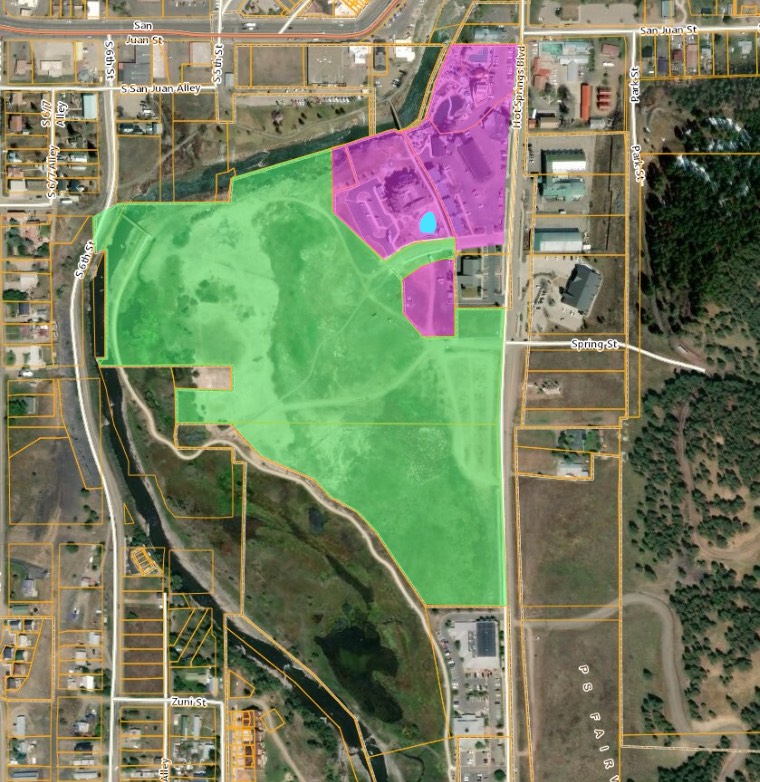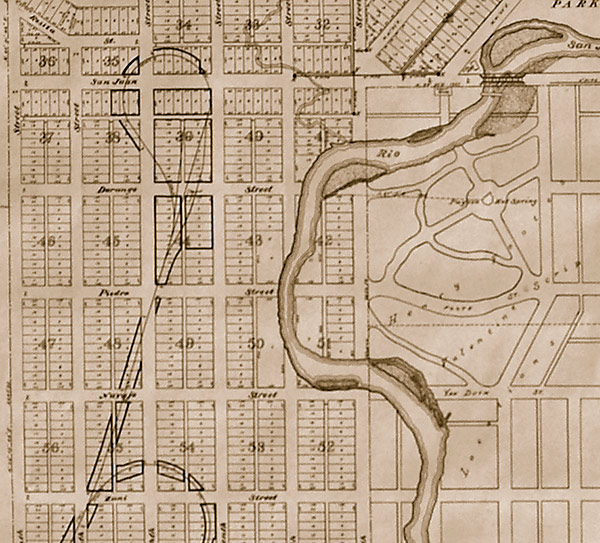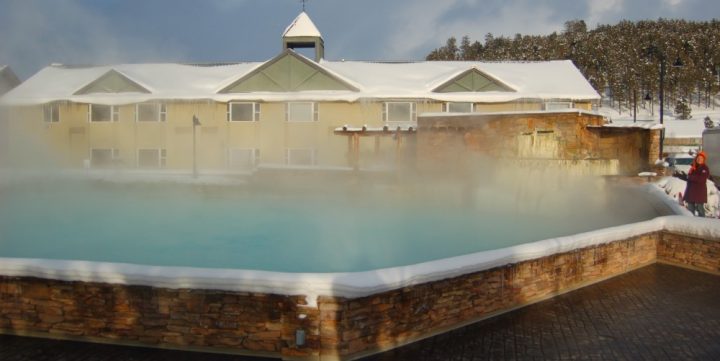What would the community of Pagosa Springs most value, on a 27-acre parcel of rocky terrain overlooking the San Juan River — if the community could actually weigh in on that decision?

About three dozen people from Archuleta County did indeed gather on February 7, to discuss a joint venture between the Springs Resort & Spa — one of the prime tourism amenities in Pagosa — and property owner and developer Jack Searle — one of the most active homebuilders in the community. We (the audience) didn’t own a stake in the vacant 27-acre property; Mr. Searle and Springs representative David Dronet were under no legal obligation to allow public input (as they would be if, for example, they were seeking to change the zoning of the 27-acres.) This was an example of good community relationship-building.
Or so it seemed.
Of course, we (the audience) are stakeholders nevertheless. We (the public) have allowed our local governments to create a rather massive “Land Use Regulations” document to guide the process of building design and construction in Archuleta County — and a separate and equally massive “Land Use and Development Code” adopted by the Town of Pagosa Springs. The documents that can be applied to the construction of a home or commercial space, in 2019, can be stacked to form a pile more than 12 inches high, when you include the adopted International Building Code, the International Residential Code, and their appendices.
These rules and regulations were not a subject of our discussion at the February 7 community meeting, however. Rather, Springs principal David Dronet and the project architect, Mike Moore, appeared to want some more general input.
Mr. Dronet:
“So I would start by posing the question… What do you think, as members of the community with longer or shorter histories here — starting with a clean slate, as we [the project developers] think of it, because we don’t have the history that most of you have — what do you see, and what do you desire to see happen? Whether it’s adjacent to the Resort, or just as a stand alone project, on this adjacent land?
“I guess I want to open that up, and ask for feedback. Your thoughts. What you envision — or hope — becomes of this space.”
Local activist Bob LeCour began the input process by discussing the possible impact of a new development on the Town-owned wetlands adjacent to the vacant parcel, on the southwest. He suggested that the wetlands have “the highest biodiversity of animals” in the county, and that the River Walk through that wetlands is “one of the hearts of this community.” He suggested ‘buffering’ the development along the southwestern boundary.
At that point, Mr. Dronet weighed back in. “We’re going to be talking, in a minute, about the idea of a ‘gathering place’ for the community. Not necessarily for tourism… not necessarily. But I think one of the goals we have in maintaining an ‘authenticity’ here, is to create a place that locals want to be — not necessarily that visitors want to be — and as a byproduct, it will just naturally become a great place…”
Evidently, the Springs Resort (Mr. Dronet) and the Springs Partners (Mr. Searle) already had some preliminary ideas, focused around an ‘authentic’ gathering place of some kind.
The local tourism industry wants Pagosa Springs to seem ‘authentic.’ The Pagosa Springs Area Tourism Board features the motto, “REFRESHINGLY AUTHENTIC,” in their marketing materials. Tourists are getting tired of Disneyland experiences, and nowadays, many of them are looking to visit places that remind them of what America used to feel like.

Right out of the gate, we can admit that development in Pagosa Springs, over the past 50 years, has not been focused around “community gathering places”… unless you consider the Golf Course or City Market or Walmart to be such places. (And maybe they should be considered that way?) Recent development has instead focused largely on sprawling, suburban developments where people are located as far as possible from community gathering places. When a recent transplant to Pagosa wants to impress you, they will likely mention with pride that, “I can’t see any neighbors from my window.”
Pagosa’s historic downtown, as platted in 1883, envisioned something very different.

The neighborhoods were well connected by ‘through streets’ and the lots were a mere 50 feet wide, virtually guaranteeing that you would be able to see numerous neighbors’ homes from your window. The schools were within easy walking distance, as was the retail district. Pagosa Springs was designed, from the very beginning, to be a walkable community. (Considering that the automobile would not be invented for another two years.)
But times change, and generally speaking, no one walks in Pagosa Springs… except to walk their dog, or because they’re jogging to lose weight. There are maybe six retail stores left in the historic downtown core that cater to local residents — the rest are mainly tourist shops — and a fair number of downtown homes have recently been converted into vacation rentals… or second homes.
The government-subsidized tourism industry has successfully drained nearly all of the ‘authenticity’ out of downtown.
As the audience began to discuss Mr. Dronet’s suggestion — that we have a great ‘gathering place’ that might help us retain what little authentic character we still possess — I felt our embryonic discussion about community desires had been preempted. Maybe the ‘clean slate’ was not quite as clean as we thought?

Then we heard these comments from local musician Steve Blechschmidt:
“If you think about, that these [hot springs] and this area, with all its national forest and so on… There’s no place like it in the world… So if you start your development from that perspective…
“If you only put up housing, if you just do normal things — normal bridges, normal structures — you’ve lost this unique thing that you can’t find anywhere else in the world…
“One thing I think Pagosa lacks is the idea of a downtown… so in every architectural design, and in every bridge and in every pathway, you should leverage that uniqueness…
“I hope [the development] doesn’t go the other way, and it becomes just typical town homes. Whoop-dee-doo! Anybody can do that…”
No, I guess we don’t want that: just boring, authentic town homes.
No, we probably don’t want a community where average folks can actually afford a house to live in.

